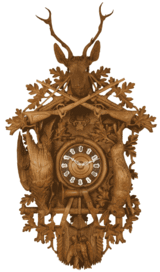- Cultural icon
-
A cultural icon can be a symbol, logo, picture, name, face, person, building or other image that is readily recognized and generally represents an object or concept with great cultural significance to a wide cultural group. A representation of an object or person, or that object or person may come to be regarded as having a special status as particularly representative of, or important to, or loved by, a particular group of people, a place, or a period in history.
In the media, many well-known manifestations of popular culture have been described as "iconic". Some writers say that the word is overused.[1][2][3]
Contents
Icons and persons
According to Times of India:
Che Guevara, Jim Morrison, John Lennon, Bob Marley, The Beatles — these are names that refuse to fade out. No generation gap can lower their popularity. They will always remain a symbol of youth.—Times of India, July 1, 2009, [4]Icons and brands
Brands can reflect social values and changes, but many people have become weary of them.[5] Many brands aspire to become cultural icons, but fail. Cultural icons are often timeless, imprinted in our consciousness. They can go through several stages, from "rumblings, undercurrents" via "catharsis, explosion" and "mass acceptance, ripple effect" to "glorification, representative value". While brands are rational and driven by features, cultural icons are emotional, free, driven by feeling, and creating emotional bonds. An example of "branding" might include the wearing of a consistent fashion look by such music stars as Michael Jackson or Elvis Presley, making them instantly recognizable. Royal trappings or church garb could also be understood as a form of emotional iconography.
Definition
Cultural icons may be national, regional or related to a city. And they can be symbols for a nation, or can evoke particular values held by that state. For example, France uses Marianne as a symbol of the French Revolution. Bruce Lee is a symbol for the martial arts and philosophical culture of insight and knowledge in the entire world.[6][7][8] Charlie Chaplin symbolises comical action while Clint Eastwood is a worldwide symbol for strength and masculinity. Jackie Chan is a global icon of comical stunts and martial arts based action.[9] Salvador Dalí is the worldwide icon for the bizarre and eccentric.[verification needed]
Media overuse
Some writers say that the terms "icon" and "iconic" have been overused. A writer in Liverpool Daily Post calls "iconic" "a word that makes my flesh creep", a word "pressed into service to describe almost anything".[1] The Christian Examiner nominates "iconic" and "amazing" to its list of overused words, finding over 18,000 "iconic" references in news stories alone, with another 30,000 for "icon", including use of it for SpongeBob SquarePants.[2]
See also
- Icon
- Icon (secular)
- Icon (disambiguation)
- Replicas of Michelangelo's David
- Popular culture
- National icon
References
- ^ a b Let's hear it for the Queen's English, Liverpool Daily Post
- ^ a b Modern word usage amazingly leaves us yearning for gay, old times, Christian Examiner
- ^ Heard about the famous icon? We have - far too often, The Independent (London), January 27, 2007
- ^ The Past Beckons
- ^ Lessons from Cultural Icons - How to Create an Iconic Brand
- ^ Stein, Joel (14 June 1999). "Bruce Lee: With nothing but his hands, feet and a lot of attitude, he turned the little guy into a tough guy". The Time 100. New York: Time Inc. http://205.188.238.181/time/time100/heroes/profile/lee01.html. Retrieved 7 June 2010.
- ^ "From Icon to Lifestyle, the Marketing of Bruce Lee". nytimes.com. 11 December 2009. http://www.nytimes.com/2009/12/12/business/global/12iht-lee.html. Retrieved 3 June 2011.
- ^ "Dragon's Heart: A kungfu master's living legacy". chinadaily.com. 5 January 2011. http://www.chinadaily.com.cn/life/2011-01/05/content_11797040.htm. Retrieved 10 June 2011.
- ^ "Stuntman to Martial Arts Superstar Jackie Chan reveals the man behind the camera on CNN's Talk Asia". CNN-Asia Pacific. 9 April 2008. http://www.cnnasiapacific.com/press/en/content/338/. Retrieved 10 June 2011.
External links
Categories:
Wikimedia Foundation. 2010.

